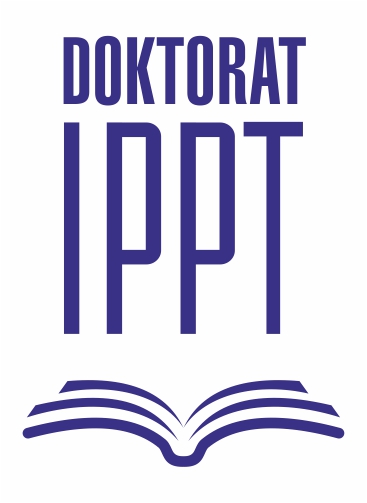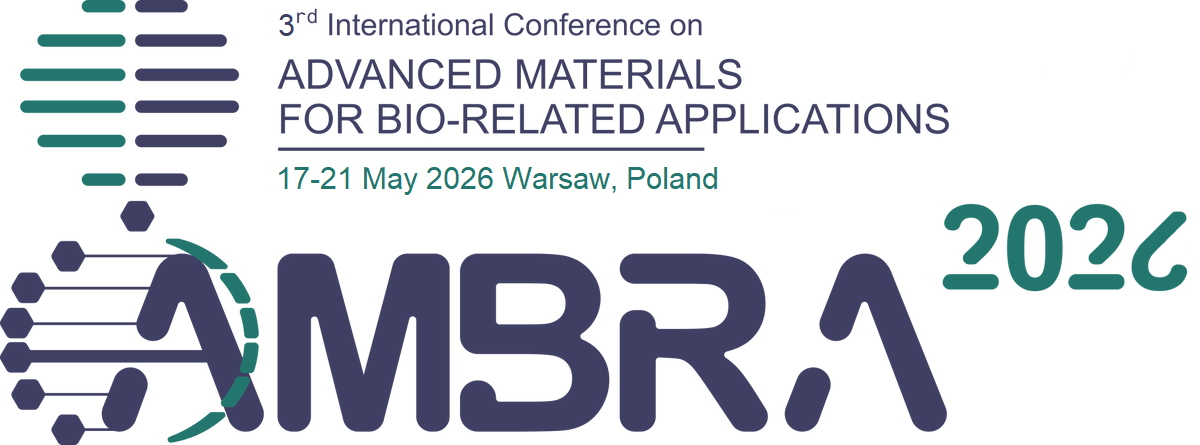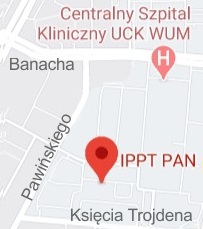| 1. |
Shekhar C.♦, Kiran A.♦, Mehandia V.♦, Dugyala Venkateshwar R.♦, Sabapathy M.♦, Droplet–Bijel–Droplet Transition in Aqueous Two-Phase Systems Stabilized by Oppositely Charged Nanoparticles: A Simple Pathway to Fabricate Bijels,
LANGMUIR, ISSN: 0743-7463, DOI: 10.1021/acs.langmuir.1c00655, Vol.37, No.23, pp.7055-7066, 2021 Streszczenie:
We demonstrate a novel yet straightforward methodology of stabilizing aqueous two-phase systems (ATPS) using oppositely charged nanoparticles (OCNPs). We employ commercial-grade, Ludox, OCNPs to induce self-assembly. This self-assembly route promotes the stronger adsorption of nanoparticles at the water–water interface by triggering the formation of 2D and 3D aggregates of varying sizes and shapes. The interplay of this size and shape promotes stability due to increased Gibbs detachment energy and modulates the resulting cluster adsorption at the interface, thereby the structural state of emulsions. We demonstrate the influence of polymers’ and particles’ composition on the structural transformation from droplet–bijel–droplet using a phase diagram. For the first time, such a structural transition and the single pathway are reported within the domain of ATPS to produce stable bijels or colloidal capsules. It is asserted that the essential condition of three-phase contact angle (θ) = 90° to favor the formation of bijels can be established by selecting a suitable experimental condition using a phase diagram without employing any complicated surface modification procedures reported in the literature. Further, the mechanistic route favoring the formation of bijels and emulsion droplets at different experimental regimes is presented based on the empirical study using turbidity and zeta potential measurements. These studies reveal that the formation of bijels will be most favored when the parameter M (ratio of weight fraction of positively charged nanoparticles to negatively charged nanoparticles) is chosen between 0.7 and 4. It is intriguing to note the fact that, while the droplets stabilized by OCNPs have shown good resilience under high centrifugal action, the bijels produced in this way continued to remain stable for a long time, offering a facile route to prepare the bijels with a hierarchical bicontinuous network structure. Afiliacje autorów:
| Shekhar C. | - | inna afiliacja | | Kiran A. | - | inna afiliacja | | Mehandia V. | - | inna afiliacja | | Dugyala Venkateshwar R. | - | inna afiliacja | | Sabapathy M. | - | inna afiliacja |
|  | 100p. |
| 2. |
Kiran A.♦, Shekhar C.♦, Sabapathy M.♦, Mishra M.♦, Kumar L.♦, Kumar N.♦, Mehandia V.♦, Effect of serum starvation on rheology of cell monolayers,
PHYSICS OF FLUIDS, ISSN: 1070-6631, DOI: 10.1063/5.0050984, Vol.33, No.7, pp.071908 -1-17, 2021 Streszczenie:
The rheological properties of cells and tissues are central to embryonic development and homeostasis in adult tissues and organs and are closely related to their physiological activities. This work presents our study of rheological experiments on cell monolayer under serum starvation compared to healthy cell monolayer with full serum. Serum starvation is one of the most widely used procedures in cell biology. However, the effect of deprivation of serum concentration on the material properties of cells is still unknown. Therefore, we performed macro-rheology experiments to investigate the effect of serum starvation on a fully confluent Madin–Darby Canine Kidney cell monolayer. The material properties, such as linear and non-linear viscoelastic moduli, of the monolayer, were measured using oscillatory shear experiments under serum-free [0% fetal bovine serum (FBS)] and full serum (10% FBS) conditions. Our results indicate that a serum-starved cell monolayer shows a different rheological behavior than a healthy cell monolayer. The loss and storage moduli decrease for the step-change in oscillatory strain amplitude experiments for a serum-starved cell monolayer and do not recover fully even after small deformation. In comparison, a healthy cell monolayer under full serum condition remains flexible and can fully recover even from a large deformation at higher strain. The effect of adhesion due to fibronectin was also studied in this work, and we found a significant difference in slip behavior for cell monolayer with and without serum. Afiliacje autorów:
| Kiran A. | - | inna afiliacja | | Shekhar C. | - | inna afiliacja | | Sabapathy M. | - | inna afiliacja | | Mishra M. | - | inna afiliacja | | Kumar L. | - | inna afiliacja | | Kumar N. | - | inna afiliacja | | Mehandia V. | - | inna afiliacja |
|  | 100p. |


















